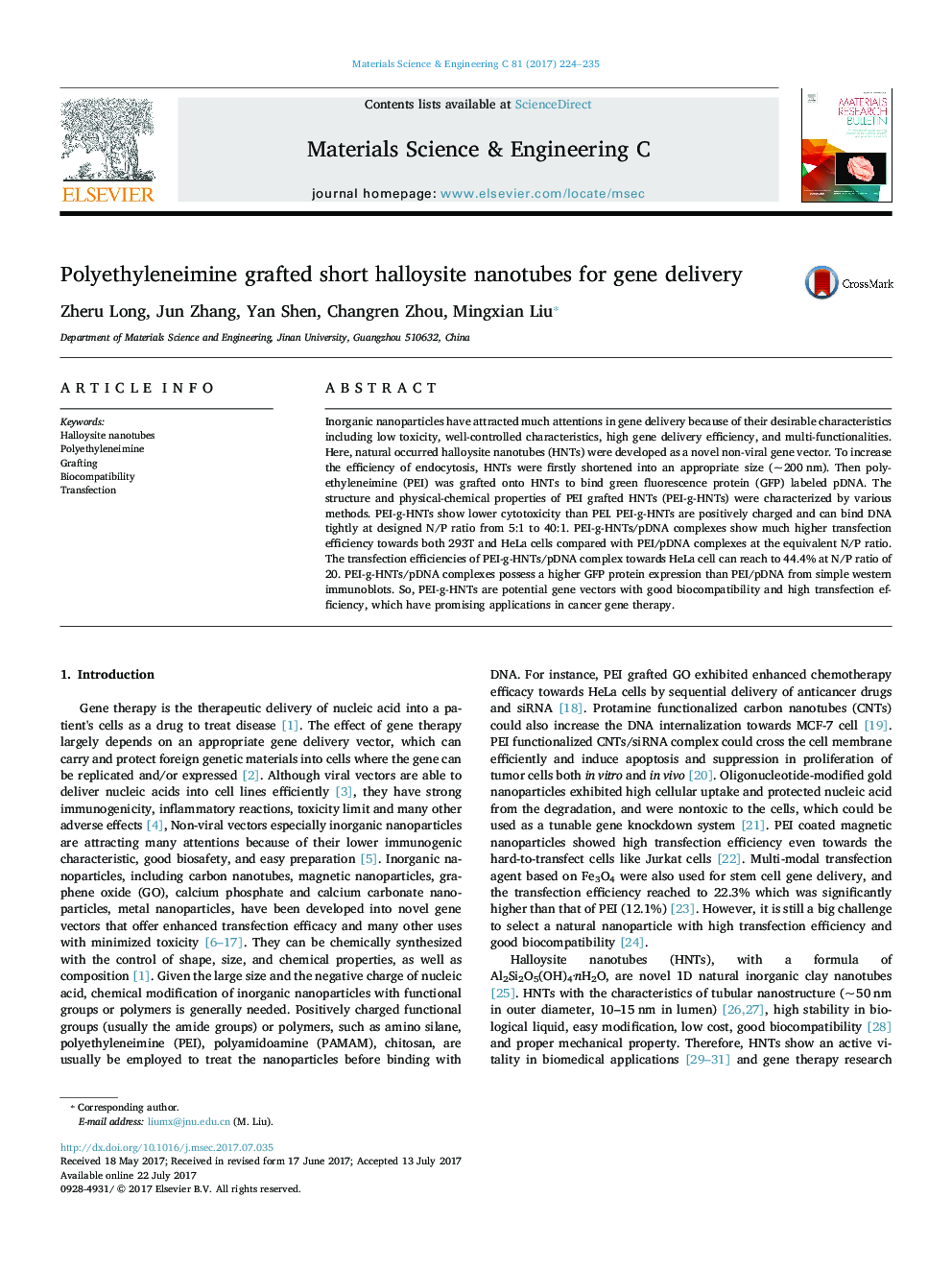| Article ID | Journal | Published Year | Pages | File Type |
|---|---|---|---|---|
| 5434232 | Materials Science and Engineering: C | 2017 | 12 Pages |
â¢PEI grafted halloysite were developed as a novel non-viral gene vector.â¢PEI-g-HNTs show lower cytotoxicity than PEI and bind DNA tightlyâ¢PEI-g-HNTs/pDNA complexes show high transfection efficiency towards cellsâ¢GFP protein expression at the N/P ratio of 20 is higher than other ratio
Inorganic nanoparticles have attracted much attentions in gene delivery because of their desirable characteristics including low toxicity, well-controlled characteristics, high gene delivery efficiency, and multi-functionalities. Here, natural occurred halloysite nanotubes (HNTs) were developed as a novel non-viral gene vector. To increase the efficiency of endocytosis, HNTs were firstly shortened into an appropriate size (~Â 200Â nm). Then polyethyleneimine (PEI) was grafted onto HNTs to bind green fluorescence protein (GFP) labeled pDNA. The structure and physical-chemical properties of PEI grafted HNTs (PEI-g-HNTs) were characterized by various methods. PEI-g-HNTs show lower cytotoxicity than PEI. PEI-g-HNTs are positively charged and can bind DNA tightly at designed N/P ratio from 5:1 to 40:1. PEI-g-HNTs/pDNA complexes show much higher transfection efficiency towards both 293T and HeLa cells compared with PEI/pDNA complexes at the equivalent N/P ratio. The transfection efficiencies of PEI-g-HNTs/pDNA complex towards HeLa cell can reach to 44.4% at N/P ratio of 20. PEI-g-HNTs/pDNA complexes possess a higher GFP protein expression than PEI/pDNA from simple western immunoblots. So, PEI-g-HNTs are potential gene vectors with good biocompatibility and high transfection efficiency, which have promising applications in cancer gene therapy.
Graphical abstractDownload high-res image (299KB)Download full-size image
